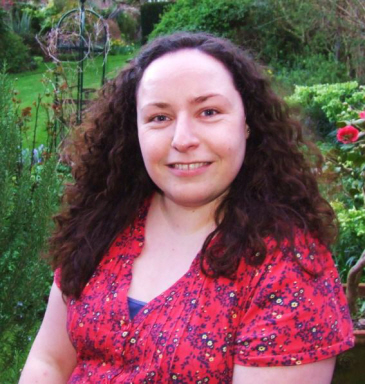This September, I travelled to Tohoku University, Japan, to take part in the RENKEI summer school programme on the theme of Energy Supply within Traditional and Environmentally Conscious Growth Models. RENKEI is a Japan-UK collaboration and six universities from each country participate in pilot projects in three key areas: technology and knowledge exchange with industry, student mobility, and universities’ social engagement. Early career researchers, PhD students and taught postgraduates work together within a supported framework to develop critical skills in a dynamic environment.
In my role of Education for Sustainable Development (ESD) Coordinator, I was interested to see the teaching and learning applications of this theme in an interdisciplinary context. I am forever indebted to the University of Bristol for supporting this extraordinary opportunity (thanks to PVC Nick Lieven for funding provided and for accepting my application).
 |
| The international contingent visit the Toyota factory. Image credit: Aisling Tierney |
Fieldtrips were an essential component of the experience. At the Sendai municipal incinerator plant we learned how household waste provided energy for the city. I was surprised to hear that the household waste in Sendai is not segregated into recycling and non-recycling. When asked, the lead incinerator engineer commented that this situation was not ideal, but until recycling became widespread, incineration provided an energy benefit to the waste problem. The Miyagi Province Toyota Factory demonstrated how surplus heated water from the manufacturing process could be channelled into community-run glass houses to support local agricultural production. Factory workers were also encouraged to explore sustainable projects on the company’s grounds, for example, planting tree grooves that would serve as a relaxing space for future generations of workers. The implication was that the children of the factory workers would continue to work for Toyota and Toyota would continue to support the community.
 |
| The interior of one of the few buildings left standing after the tsunami. Image credit: Aisling Tierney |
The last fieldtrip of the week was to tsunami-devastated regions to the north of Sendai. The ravaged coastline and high death-toll (estimated in the region of 16,000) three and a half years later was still in the process of recovery. Plant regrowth disguised much of the damage. Construction workers showed us models and videos of the reconstruction plans, including: moving rail lines; flattening hill tops; building sea barriers; and rehousing thousands of displaced families. A boat-ride along the coast showed how the fishing industry was slowly recovering, while the tourism industry, once flourishing, was now in shambles. Over 3,300 locals are still homeless, living in pre-fabricated buildings that are quickly disintegrating. While the press criticises the speed of rebuilding efforts, speaking to the construction team showed that every effort was being made but the scale of the work was a huge undertaking.
Talks and workshops engaged with the theme of energy supply, focusing on applying interdisciplinary knowledge to create “Sustainable City” solutions. Prof. Nakata of Tohoku University acted as our lead academic for the week.
Prof. Bahaj (Southampton) was the first of the week’s speakers. He explored contrasting ideas of refurbishment of cities vs green fields, the consumer society vs equity, and that city planners must consider the ecological footprint, not just carbon. A basic tenant he offered was “everything is driven by money”. Prof. Nakata (Tohoku) wanted us to think about cities, towns, everything, not just government systems. He noted the importance of economics, resource constraints, environmental constraints, technological systems, and energy system components. The idea of community energy systems that are small scale and less dense in their demand was proposed, summarised as “Global + Local = Glocal”. He also highlighted how a low carbon society leads to sustainable and resilient business.
Mr. Suzuki (Fukushima Prefecture Government, business creation division) spoke on the importance of collaboration, including local company support, collaborative R&D, university support, and human public relations. Mr. Tsuruoka (HOPE – Higashimatsushima Organisation for Progress & Economy, Education and Energy) startled the room with the shocking facts surrounding the tsunami disaster. Fishing was reduced to 60% of before, tourism was down to a third of pre-disaster, 65% of the city went underwater, resulting in a loss of life of 3% of the population. Simulations of potential tsunami damage were twenty times smaller than reality, meaning that there was a lack of preparation and proper evacuation when alarms were raised.
 |
| Discussions continued at break times. Image credit: Aisling Tierney |
Dr. Kunimitstu (NARO – National Agricultural & Food Research Organisation) introduced us to the Japanese concept of Hosaku Binbou, which is the impoverishment of farmers because of a bumper harvest. This relates to market equilibrium and the optimisation of producers. Prof. Shukuya (Tokyo City University) explained the low energy system design and its application to sustainable city design. Dr. Barret (United Nations University) discussed energy equity on a global scale. Prof. Kurokawa (Tokyo Institute of Technology) showed how 10 countries are using 50% of world’s capacity for carbon and what this means for future sustainability planning. Shuichi Ashina (National Institute for Environmental Studies) discussed planning for future energy demands, adaptation models, and low carbon society scenarios.
The majority of students were from Engineering, with a handful from the Sciences, while I was the only collaborator from an Arts background (Archaeology). This difference was particularly noticeable during questions and discussions, and within the group work sessions. Many students commented on how the Arts approach to problem solving and systems thinking was quite different, but proved beneficial to broadening their perspective.
As I stated, my aim was to see what teaching and learning elements I could take from the experience, and one that stood out was how interdisciplinary approaches to problem solving could be developed much further. In the future, I hope that RENKEI will open itself more to contributions from the Arts and other subject areas to encourage broader views.
————————
This blog is written by Aisling Tierney, Education for Sustainable Development Coordinator, University of Bristol.
 |
| Aisling Tierney |
